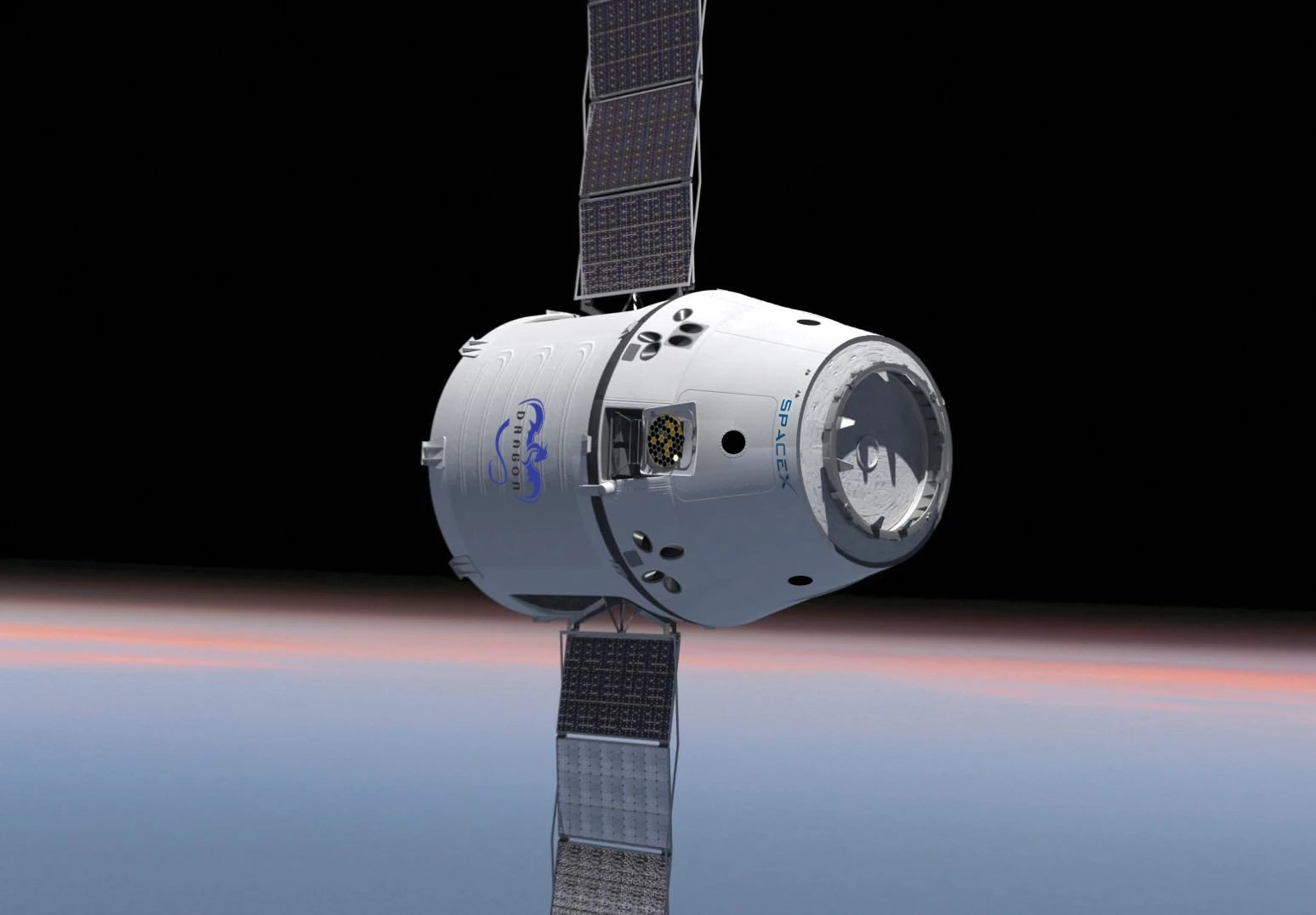At a teleconference today (Mar.1) at 3:00 PM EST (800 GMT), SpaceX and NASA confirmed that the malfunction of three of the four thruster pods of SpaceX’s Dragon spacecraft has been corrected. Though the cause of the failure remains unknown, a note received during the conference from Dragon mission control stated that all four pods are working nominally with two of the pods preparing to come online this afternoon.
According to SpaceX founder and CEO, Elon Musk, the failure of the three pods was “a glitch.” Shortly after reaching orbit following the launch of the privately built and operated Dragon CRS-2 mission from Cape Canaveral this morning, mission control noticed that the oxidizer pressure in all four thruster pod tanks was low and that three of the pods were not responding.
Over the next several hours, SpaceX worked with NASA to stabilize the unmanned craft while finding a solution to the problem. According to William Gerstenmaier, associate administrator for Human Exploration and Operations at NASA Headquarters, Washington, one of the biggest problems was maintaining proper attitude because the erratic movements of the Dragon made ground communications difficult. However, Musk said that deploying the solar panels reduced the craft’s spin and made it easier to control.
While the exact cause of the failure is not known, it seems to have been in the oxidizer system for the thruster pods. According to Musk, a valve was either stuck or blocked due to freezing temperatures, but cycling the system and pressure hammering the valve seems to have cleared the fault. At the time of the conference, pods one and four were online and two and four were at proper pressure and ready to activate.
Even if repaired, the malfunction has not been without its consequences. Before Dragon can approach the International Space Station (ISS) it will have to go through a series of tests to make sure that all systems are functioning properly and that there is sufficient redundancy to satisfy NASA and the ISS Commander, who has the final word, as to safety.
This means, according to Michael Suffredini, International Space Station program manager, that Saturday’s (Mar. 2) docking with the ISS will be postponed. It could occur as early as Sunday but Musk says that with its solar panels, Dragon could remain in orbit for months, so there’s no hurry.
Source: NASA





